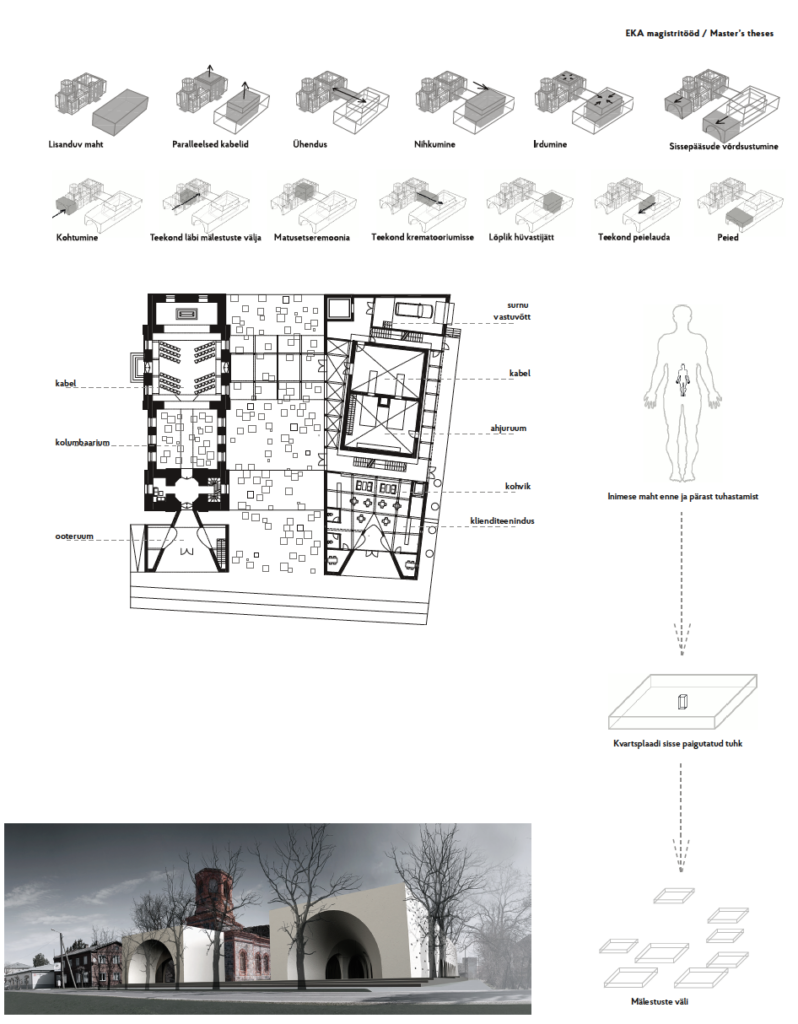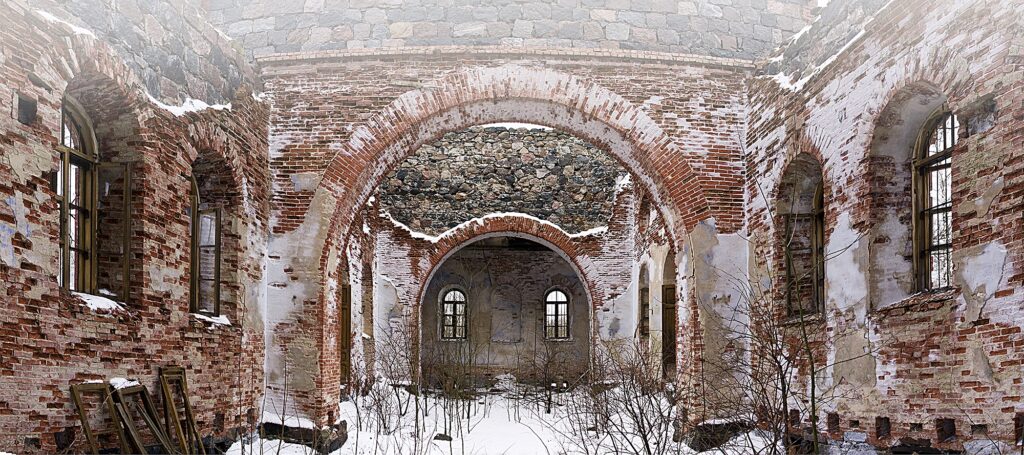There are approximately 50 unused or ruined churches in Estonia. These mainly Estonian Apostolic Orthodox churches have been neglected as a result of urbanisation and the diminished role of religion. Elsewhere in the world, churches that have suffered a similar fate have been reconstructed as concert halls, restaurants, offices, etc.
This Master’s thesis suggests establishing columbaria, i.e. burial places for cinerary urns, in abandoned sanctuaries in Estonia. A columbarium is a function similar to a sanctuary in spiritual terms and therefore does not require massive rebuilding. Changing the condition of the buildings as little as possible is intentional: the lives of the buried souls and the sanctuaries that surround them have ended.
Bishop Philippe Jourdan has expressed a beautiful thought on the nature of a sanctuary. He has said that a church consists of building blocks as well as living stones, which are the thoughts and feelings that give meaning to the church building.
Inspired by this, every deceased person added to the columbarium could become a building block of the church both spiritually and physically. The specially designed urns or blocks, synthesised from ashes, would replace broken or missing stones in the church wall. The floor would be used instead of urn shelves, with the ashes being placed in a stone tile of suitable dimensions, marking the space that belonged to the person’s body during their life. The religious meaning of a church will gradually turn into a memorial one.
A crematorium (of which there are none in Western Estonia) with a funeral centre would be added to Lihula Orthodox Church in the course of reconstruction. The crematorium will attempt to achieve the image of a sanctuary with architectural methods in order to fit in next to the church in the town centre. The complex will be bound into a whole by the urn funeral process.
Tutors: Markus Kaasik and Andres Ojari (Estonian Academy of Arts).

Files (In Estonian):
Article is published in Maja’s 2018 winter edition (No 92).





